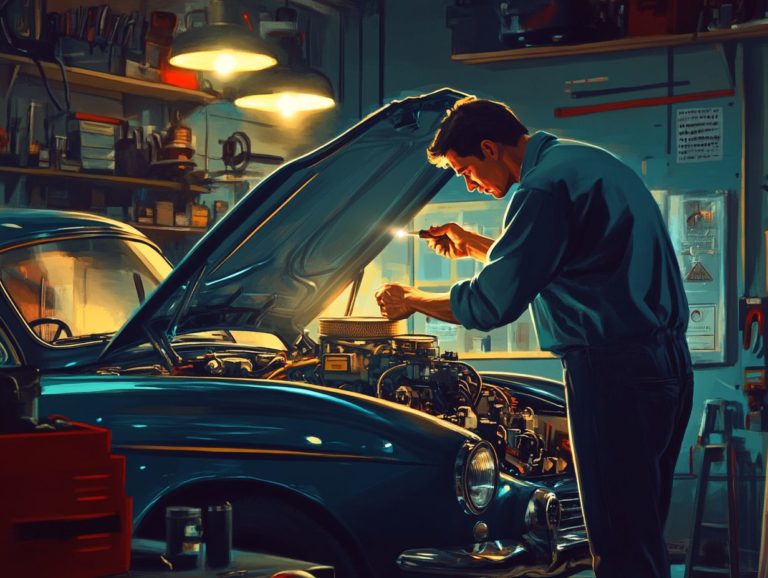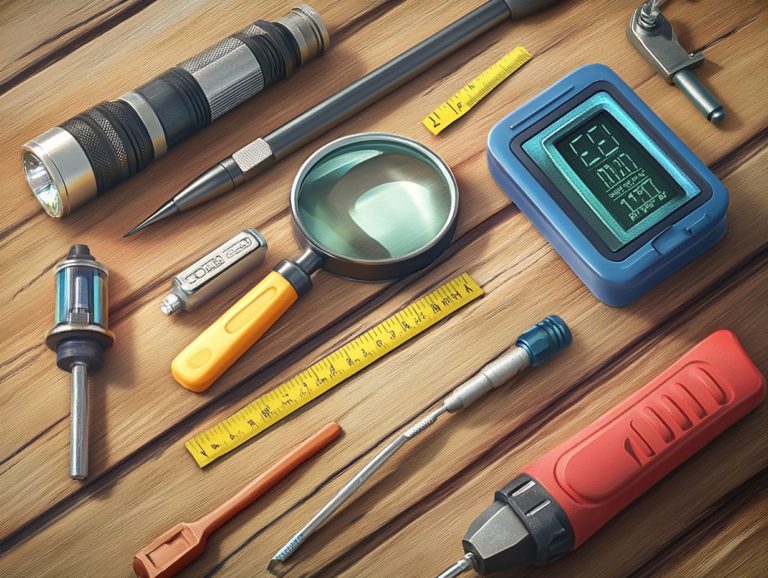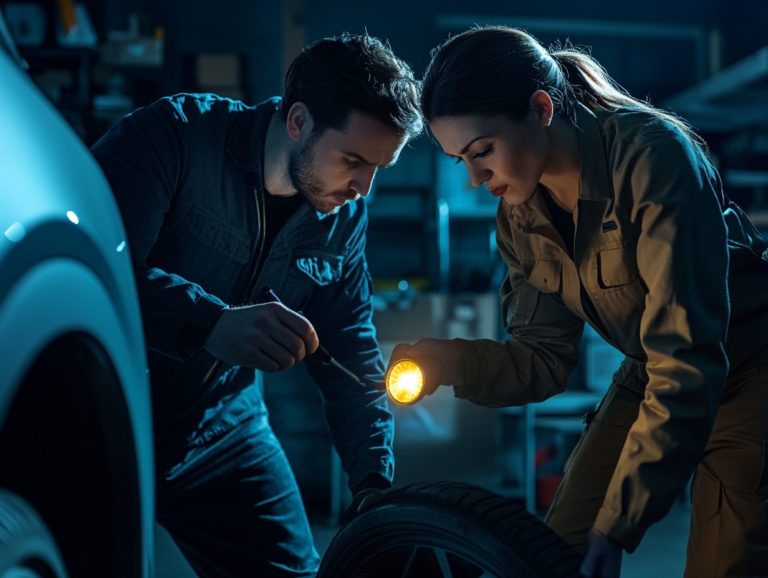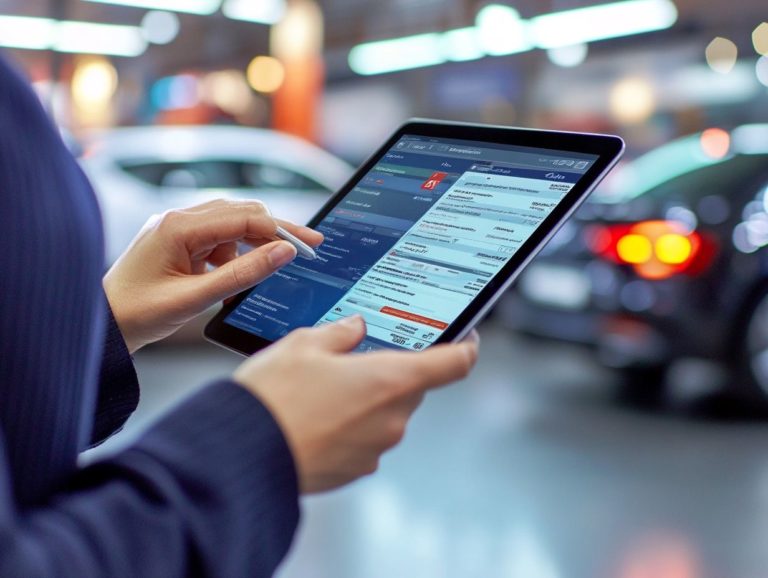How to Inspect a Car for Accident Damage
When you re purchasing a used vehicle, grasping its history and condition is absolutely essential, particularly concerning any accident damage.
This guide offers valuable insights on how to identify different types of damage and their implications for the vehicle.
From conducting exterior visual inspections and uncovering hidden damage to evaluating the interior and mechanical components, you ll be guided through a thorough inspection process.
It also highlights the importance of checking the vehicle’s history and the benefit of seeking professional advice.
Ready to become a smart car buyer? Let s dive in!
Contents
- Key Takeaways:
- Understanding Accident Damage
- Inspecting the Exterior of a Car
- Examining the Interior of a Car
- Assessing the Mechanical Components
- Additional Considerations
- Frequently Asked Questions
- What are some common signs of accident damage on a car?
- How can I check for frame damage on a car?
- What should I look for when inspecting the exterior of a car for accident damage?
- How can I tell if a car has been in a major accident?
- What should I do if I find accident damage on a car I am interested in buying?
- Can I Still Buy a Car with Accident Damage?
Key Takeaways:
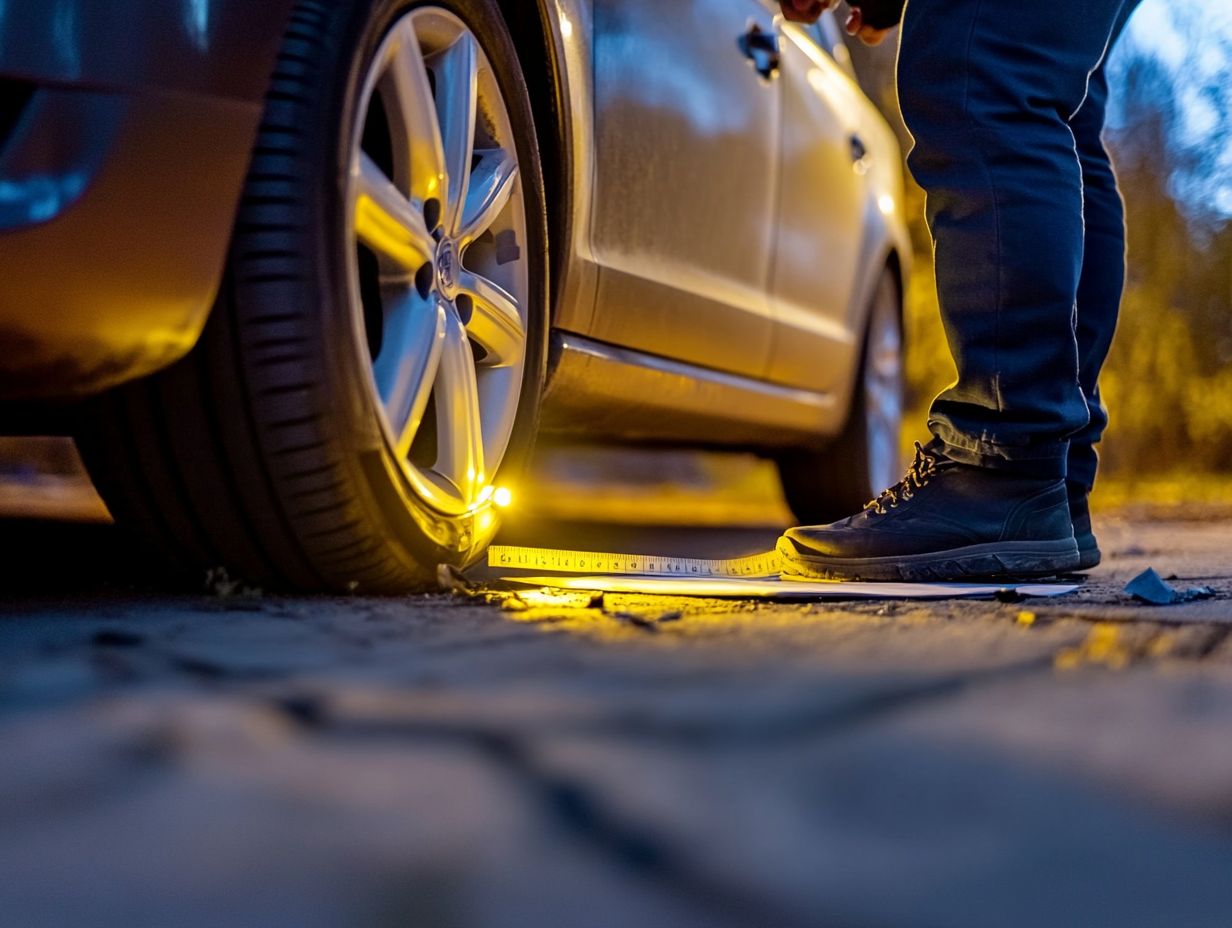
Identify types of accident damage and their impact on a vehicle’s condition.
Thoroughly inspect the exterior and interior for signs of damage and previous repairs.
Assess mechanical components and consider seeking professional inspection for a comprehensive evaluation.
Understanding Accident Damage
Understanding accident damage is essential for anyone involved in a car accident, particularly when it relates to an injury case. The nature of the damages sustained can greatly affect the course of your claims and compensation, along with the interactions you ll have with insurance providers, mechanics, and legal professionals.
From the first accident report to detailed inspections assessing structural damage and vehicle appraisals, dealing with the aftermath can be tough. Having the right knowledge is key.
Types of Damage and Impact on Vehicle
When you evaluate the types of damage sustained by your vehicle after a car accident, it s crucial to understand how each category impacts both the overall condition and selling price of your automobile.
Typically, two primary categories emerge in these assessments: structural and cosmetic damage.
Structural damage refers to any damage that affects the car’s frame or support structure, which can lead to significant repair costs. On the other hand, cosmetic damage usually involves scratches, dents, and minor paint issues. While these might not jeopardize safety, they can still influence the perceived value of your car.
Understanding the extent of these damages is vital, as it directly affects your insurance claims. A thorough vehicle inspection can help determine whether your car is a total loss or simply in need of repairs. This knowledge not only influences financial outcomes but also gives you the power to make informed decisions about your options moving forward.
Inspecting the Exterior of a Car
Inspecting the exterior of a car is essential for assessing the full extent of damage incurred during an accident. To truly understand how to tell if a car has been in an accident, this step offers invaluable insights into the vehicle’s aesthetic appeal and functional integrity, allowing you to make informed decisions about repairs and safety.
Visual Checks and Warning Signs
Visual checks serve as your first line of defense in spotting warning signs that might indicate potential issues with a damaged vehicle, particularly after an accident. For a more thorough approach, refer to this step-by-step guide to inspecting a car.
By closely evaluating the condition of your tires, you can detect uneven wear or visible damage that could jeopardize your safety. It s essential to scrutinize the brake systems as well; any leaks, corrosion, or noticeable wear on the brake pads can point to deeper problems that demand mechanical attention.
Beyond these key components, assessing safety features such as lights, turn signals, and mirrors ensures your vehicle is roadworthy. Each of these checks not only sheds light on the immediate safety of your car but also informs any necessary mechanical inspections.
Don t wait! Inspecting your car s exterior now can save you money later. Documenting your findings during these inspections is crucial, especially for insurance claims, as it helps to substantiate the extent of damages and any repairs that may be needed.
Using a Paint Meter to Detect Hidden Damage
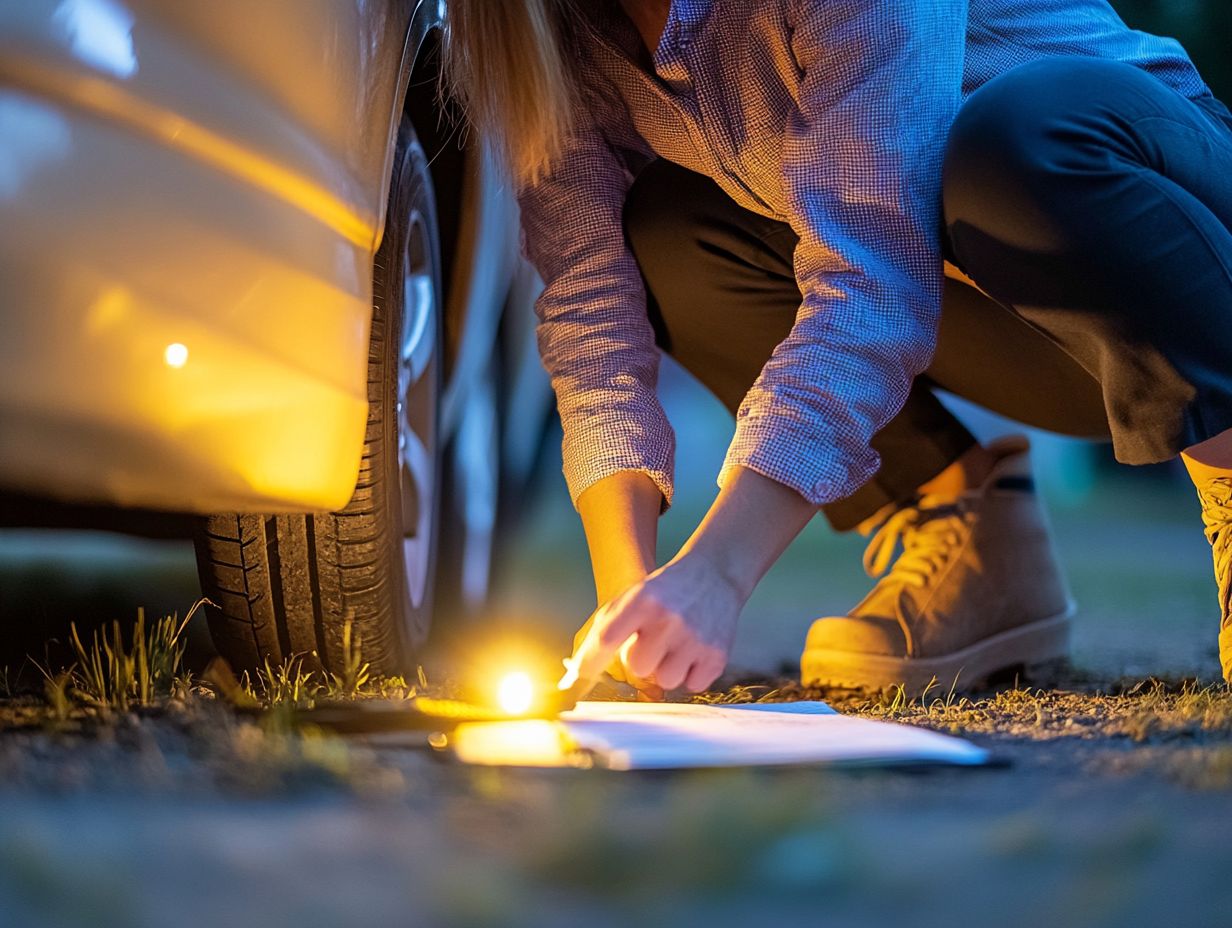
Utilizing a paint meter is a smart way to find problems that regular checks might miss. These devices measure the thickness of the paint on different parts of a vehicle, helping to identify areas that have been repaired or repainted. This can signal a potential collision history.
This information is significant when considering collision coverage and insurance claims. Pre-existing damage might impact qualification and payout.
When you pair this with a mechanic’s thorough inspection one that scrutinizes the vehicle’s operational integrity and underlying mechanics you gain a comprehensive understanding of the car’s condition.
These technologies will help you grasp the true state of the vehicle, giving you the power to make informed decisions and protecting yourself from unexpected costs in the future.
Examining the Interior of a Car
When you examine the interior of a car, you re not just looking for wear and tear; you re looking for potential injury risks and evaluating the overall structural integrity.
This understanding can significantly influence an injury claim after a car accident, making it an essential step in the process.
Checking for Structural Integrity
Checking your vehicle s structure after an accident is a must for your safety! This assessment usually means a mechanic will take a close look at your car.
It involves professional mechanic inspections alongside advanced technologies like 3D imaging and laser scanning. These tools help spot structural problems that are hard to see.
Certified mechanics are equipped to evaluate vital components and recommend necessary repairs to ensure that your vehicle adheres to safety standards. The insights gathered from these evaluations can dramatically influence legal outcomes, especially in personal injury cases.
Thorough documentation of any structural damage can serve as crucial evidence when seeking compensation for injuries sustained in an accident.
Identifying Signs of Previous Repairs
Identifying signs of previous repairs is essential for understanding a vehicle’s history. It can significantly influence both its appraisal and insurance estimate.
When you conduct a close inspection, indicators like mismatched paint or noticeable welding marks can reveal stark discrepancies that suggest prior accidents or subpar repairs. Understanding how to inspect a used car before purchase can help you identify these red flags for potential buyers and complicate the documentation of damage and assessments of pre-existing conditions.
Insurance companies place considerable emphasis on a thorough evaluation of such signs to provide accurate estimates for injury claims. Therefore, performing an in-depth analysis of a vehicle s history, including any modifications, is increasingly vital for ensuring fair treatment during claims processes and protecting everyone’s interests.
Assessing the Mechanical Components
Evaluating the mechanical components of a vehicle after an accident is crucial for understanding its overall performance and safety, as well as estimating potential repair costs. This assessment not only informs you about the vehicle’s condition but also guides your decisions moving forward.
Checking for Misalignment and Suspension Damage
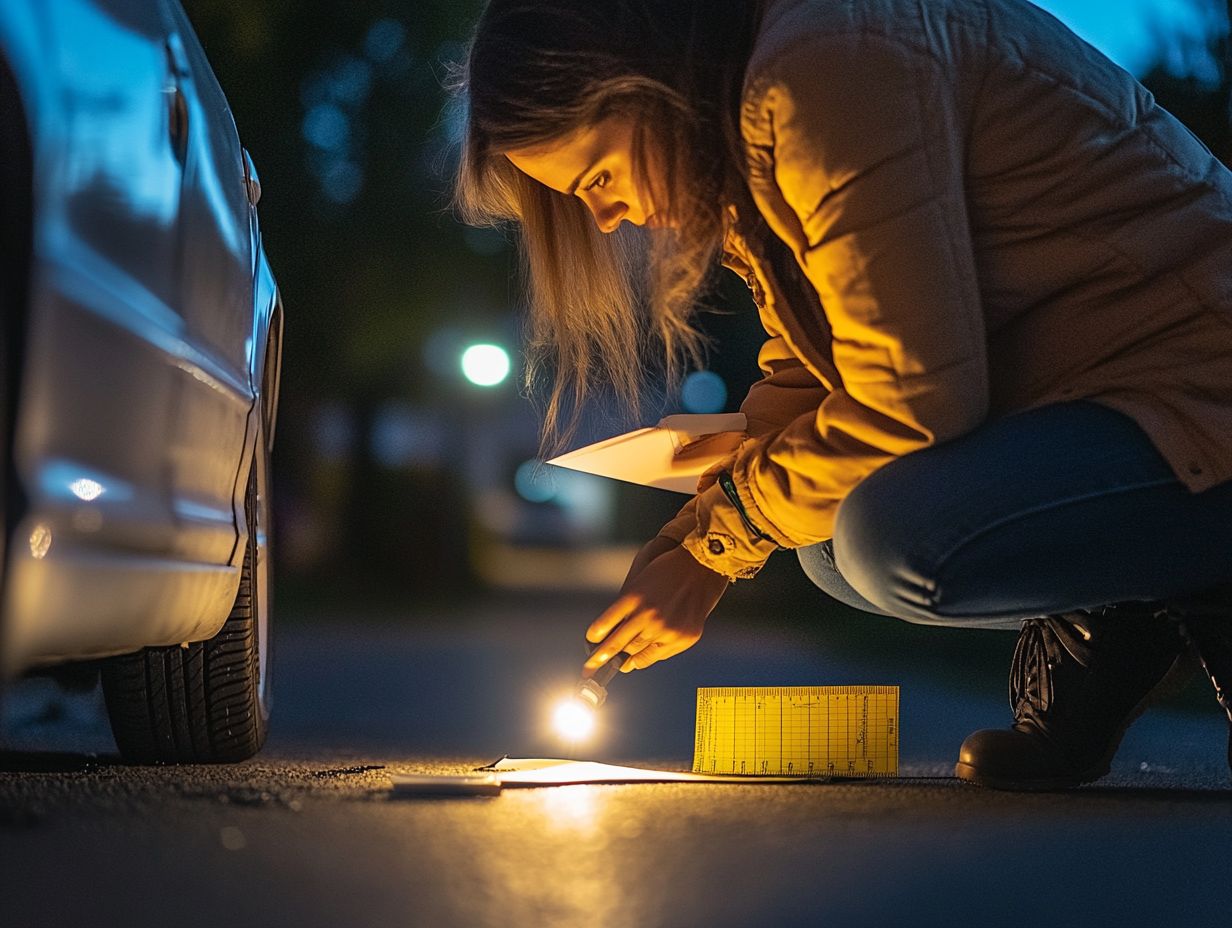
Checking for misalignment and suspension damage after a car accident is essential. These issues can significantly impact your vehicle’s handling and safety.
To identify these potential problems, a thorough inspection by a skilled mechanic is necessary. Experts will carefully assess the alignment of your wheels and the overall condition of the suspension components to ensure everything is functioning smoothly.
When your vehicle has been in an accident, it may face not just visible damage but also hidden issues that could compromise its performance. Don t ignore signs like uneven tire wear, strange noises while driving, or vibrations that weren t there before.
Addressing misalignment and suspension damage is crucial for optimal vehicle maintenance and ensuring your safety on the road. It provides you with peace of mind, knowing your vehicle is equipped to handle everyday challenges efficiently.
Inspecting the Engine and Transmission
Inspecting the engine and transmission is crucial for evaluating a vehicle s performance and ensuring it meets safety standards after a collision.
The process begins with a meticulous visual inspection, where mechanics search for any signs of wear, leaks, and damage. They then use specialized diagnostic tools to read error codes, which show potential issues like erratic shifting or unusual noises.
Addressing these codes promptly can prevent additional damage and ensure optimal operation. Evaluating these components is essential not just for immediate repairs but also for the long-term reliability of your vehicle.
This underscores the importance of seeking professional auto repair services to maintain both safety and performance standards.
Additional Considerations
Reviewing vehicle history and accident reports is important for gaining a comprehensive understanding of the implications a car accident can have on insurance claims and compensation.
Taking the time to delve into these details ensures you re well-informed and prepared to navigate the complexities of the claims process.
Reviewing Vehicle History and Accident Reports
Reviewing vehicle history and accident reports is essential for understanding the vehicle’s background and its implications for insurance claims and potential compensation.
By diligently obtaining these documents, you can uncover any prior damages, repair history, or discrepancies that might impact your case. Analyzing these reports is crucial!
These reports not only help in documenting damages effectively but also serve as vital evidence during consultations with clients.
When discussing potential claims with insurance representatives or legal advisors, referring to the detailed insights from these reports can significantly bolster your chances of achieving a favorable outcome.
Establishing a clear timeline of the vehicle’s incidents also plays a pivotal role in navigating legal processes. This ensures that all parties are thoroughly informed about the vehicle s condition and history.
Seeking Professional Inspection and Advice
Seeking professional inspection and advice after a car accident is essential. Experts provide essential insights that can make or break your injury claim!
In many instances, the need for thorough vehicle care becomes obvious. Evaluating the extent of damages and ensuring proper repairs protects you from future hazards.
It also plays a pivotal role in substantiating your claims. Legal services are vital for grasping the intricacies of personal injury law.
A St. Louis lawyer can skillfully navigate the post-accident landscape, ensuring that every angle is explored and maximizing the compensation for your injuries.
Their expertise can significantly impact your recovery process, allowing you to focus on healing while your legal matters are handled with precision.
Watch this video for a step-by-step guide on inspecting your vehicle post-accident.
Frequently Asked Questions
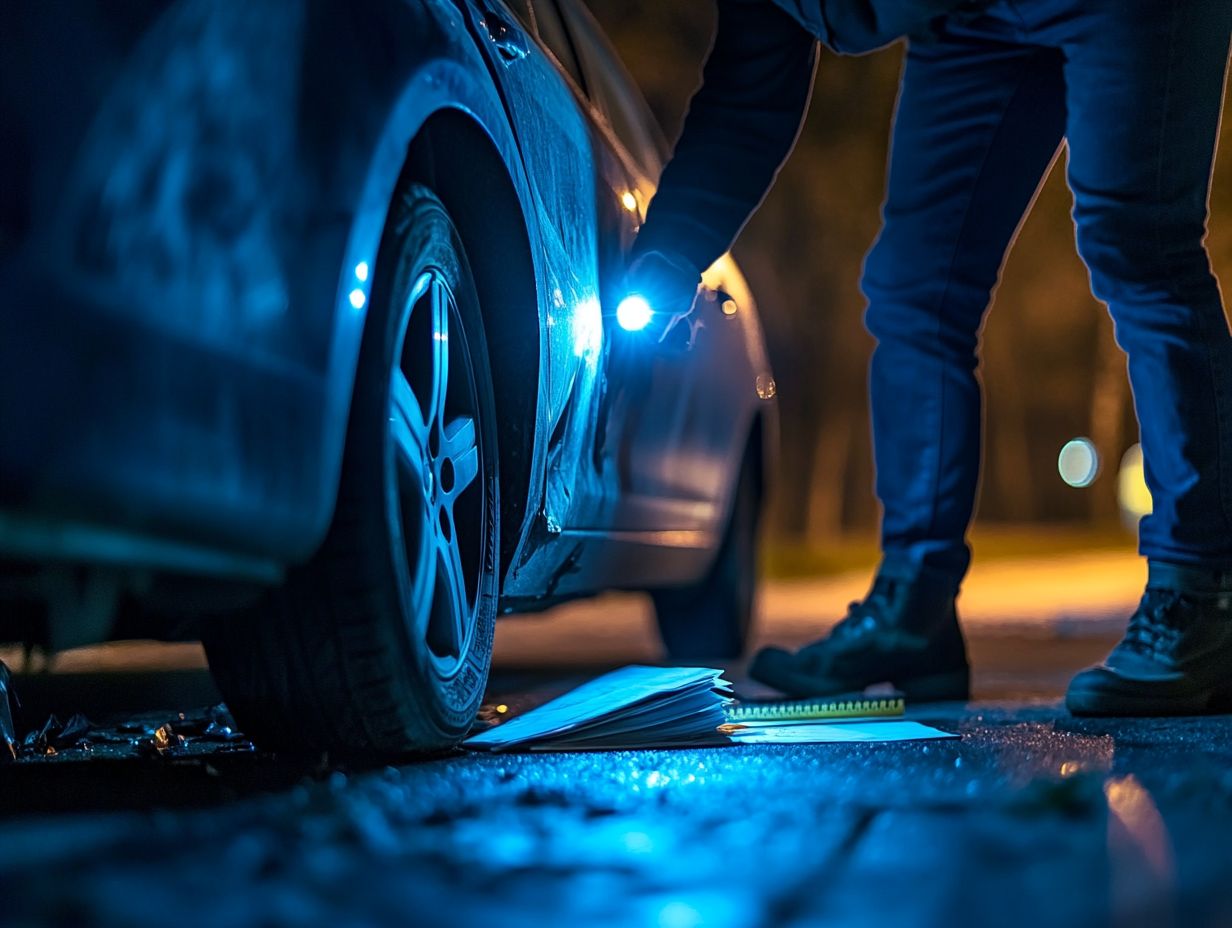
What are some common signs of accident damage on a car?
Some common signs of accident damage on a car include dents, scratches, misaligned body panels, and paint chips or cracks. Additionally, it’s important to be aware of potential issues like water damage; refer to these tips for spotting flood-damaged used cars to ensure you’re making a safe purchase.
How can I check for frame damage on a car?
One way to check for frame damage on a car is to inspect the body panel gaps. They should be consistent and even.
Any gaps that are uneven or wider than usual could indicate frame damage.
What should I look for when inspecting the exterior of a car for accident damage?
When inspecting the exterior of a car for accident damage, refer to a guide on how to inspect a car’s exterior for damage and look for signs of mismatched paint, rust, and any areas where the paint looks uneven or bubbled.
How can I tell if a car has been in a major accident?
A car that has been in a major accident may have a salvage title, meaning it has been deemed a total loss by an insurance company.
You can also check for any structural damage or repairs that were made.
What should I do if I find accident damage on a car I am interested in buying?
If you find accident damage on a car you are interested in buying, ask the seller for more information about the damage and any repairs made, and consider learning how to spot flood damage in a car as well.
You may also want to get a professional inspection or consider walking away from the purchase.
Can I Still Buy a Car with Accident Damage?
Yes, you can buy a car with accident damage. Just make sure to carefully check the damage and repairs to ensure the car is safe and in good shape.
Consider the cost of any repairs you might need. Negotiate the price to reflect those potential costs, as buying wisely can lead to significant savings.

